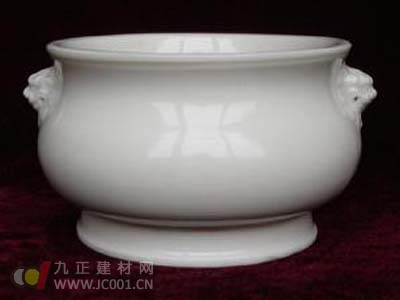Method for identifying white porcelain in Dehua kiln
Methods for Identifying Dehua White Porcelain:
(1) Visual Surface Inspection: During the early Ming Dynasty, the glaze had a slightly reddish tone, especially on the faces of female figures, appearing as red within the white. In the middle Ming period, the glaze turned slightly yellow, particularly noticeable in the color of elephant-like teeth, which appeared yellow. From the late Ming to the early Qing Dynasty, the glaze became whiter, and when the fat solidified, it showed a clear, pale appearance.
(2) Light Observation: In the early Ming era, the white color often showed a pink or flesh-red hue under light. By the mid-Ming period, the white might appear more red or yellow. In the late Ming and early Qing periods, the white was generally pure or very pale. It's important to note that the color can vary depending on the thickness of the piece, slight variations in materials, and firing temperatures. All genuine Dehua white or blue-and-white porcelain should be translucent when held up to light—opacity is a sign of modern imitations, making this a key factor in authentication.
(3) Glaze Brightness Analysis: Imitation pieces usually have an overly bright glaze that feels glaring. Authentic Dehua glaze, however, has a soft and warm sheen.

(4) Production Process Examination: Fake pieces are often made using mold casting. When examining, you may notice flow patterns caused by the casting process, typically vertical lines. The body is thin and lightweight, with a milky white glaze. Under magnification, no such characteristics are found in real pieces. On symmetrical objects, imitations tend to look too uniform, rigid, and lifeless. Real pieces are hand-molded, and at the joining points, there are visible signs of manual shaping. Even on identical designs, there are subtle differences that reflect the natural and authentic feel of the original.
(5) Checking Vulnerable Areas: Over time, areas like fingers, clothing folds, beads, and teeth may show wear or damage. These old marks are typical of authentic pieces. New fakes lack such signs.
To determine authenticity, consider these three key steps: First, use a magnifying glass to check for fractures or aged seams. Second, place the piece in an odor-free container for some time, then move it to a static environment and smell it immediately after removal. This can reveal if the cracks were recently repaired and what type of adhesive was used. Third, clean your mouth, gently rub the glazed surface, and check for any chemical odors. A slight "hemp-like" sensation on the tongue suggests the piece may have been treated with acid chemicals.
24V LED Wall Washer
LED wall washer is also called LED Linear Light .Its shell adopts aluminum alloy lamp body and integral moulding processing technology to ensure good heat dissipation effect and effectively reduce the light decay during the use of LED. Using optical grade PMMA high-efficiency lens, low light loss, good illuminance. The unique switching constant current source technology ensures the stable operation of each LED.
Our other products range:LED Underground Light, LED Underwater Light, LED Wall Washer Light, LED Linear Light, LED Outdoor Flood Light, LED Garden Light , LED landscape light , LED Strip Light , LED Step Light etc.

LED Outdoor linear light bar,LED wall washer.LED outdoor wall washer.IP68 wall washer,Building wall washer,garden wall washer
SHENGYA LIGHTING TECHNOLOGY CO., LTD. , https://www.syalighting.com